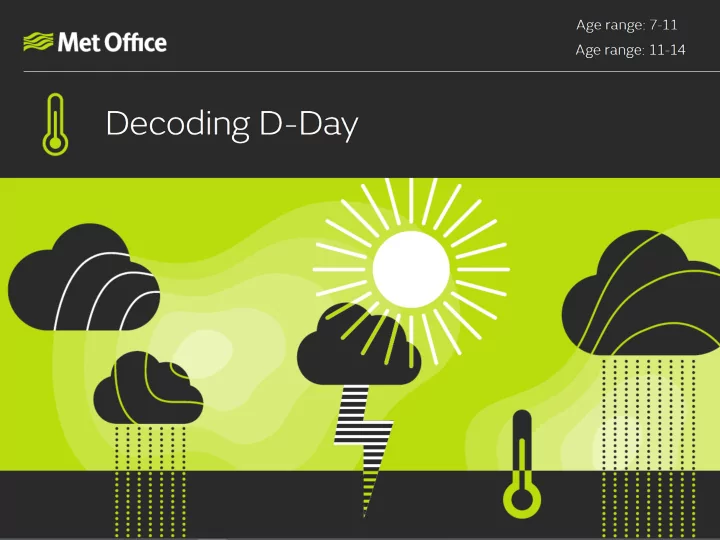

A plan was set for Operation Overlord, the Allied invasion of Normandy It included Operation Neptune, the largest seaborne invasion in history 4,000 ships 11,000 airplanes 150,000 soldiers and all their supplies A date of 5 June 1944 was agreed What they needed was the right weather, and a forecast…
What weather conditions were needed? • Darkness when the airborne troops went in, but moonlight once they were on the ground • Less than 30% cloud cover below 8,000 feet (2,400 metres) with a minimum cloud base no lower than 2,500 feet to enable aircraft carrying parachutists and tugging gliders to deploy and visibility more than three miles (5km). The gliders had similar limitations • Low tide to ensure extreme low sea level so that the landing craft could spot and avoid obstacles that had been set by the Germans on the beaches 3
James Stagg He was Chief Meteorologist to General Eisenhower, working for the Met Office, the RAF and the US Air Force Group Captain Stagg had to advise General Eisenhower what the weather was likely to be 4
James Stagg He was Chief Meteorologist to General Eisenhower, working for the Met Office, the RAF and the US Air Force Group Captain Stagg had to advise General Eisenhower what the weather was likely to be If you’re going to create a weather forecast, the first thing you need to understand is what the weather is doing now. He needed observations… 5
How did the Met Office receive the observations? Secret coded weather observations from were sent to the Met Office to be decoded These were then added to the charts for Stagg to make his big decision – could D-Day go ahead on the 5 June? 6
Weather observations chart from 4 June 6pm This very important chart was plotted at the Met Office, an hour before Stagg had to tell Eisenhower about the expected weather on the 5 June Based on the observations, Stagg said that weather conditions wouldn’t be good for a June 5 invasion Following this weather forecast, General Eisenhower decided to delay the invasion for 24 hours Stagg’s forecast suggested that there would be a ‘weather window’ for the invasion on Tuesday 6 June 7
The weather on D-Day Can you decipher the observations that would have been received by the Met Office on D-Day using the cipher wheel? Can we write them on the map? What is the weather on the morning of D-Day? 7am – 6 June 1944 8
The weather on D-Day Stagg’s forecasted weather window proved correct By 1pm, seaborne troops had been landing for 7 to 8 hours If you look closely, you can see there’s an observation from near Caen in France This is the first weather observation taken by the Allied 1pm – 6 June 1944 troops following the invasion 9
Recommend
More recommend